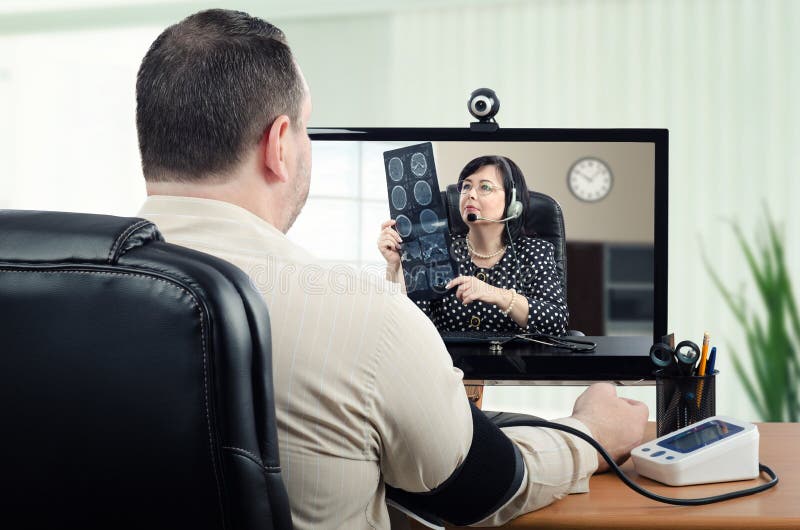Checking Out the Perks and Obstacles of Teledoctors in Modern Medical Care
As the medical care landscape develops, teledoctors have actually emerged as a pivotal part in bridging voids in clinical gain access to and performance. Just how can the medical care sector equilibrium these advantages with the fundamental obstacles?
Expanding Access to Care
Telemedicine has arised as a pivotal innovation in modern-day healthcare, significantly broadening accessibility to take care of varied populations. By leveraging digital modern technology, teledoctors have transformed the standard health care distribution design, making it feasible for people in remote or underserved areas to get prompt clinical examination. This development is especially helpful for individuals residing in rural areas, where the deficiency of healthcare facilities and experts usually leads to delayed or insufficient therapy.
Teledoctors are instrumental in bridging the gap created by geographical barriers. With online appointments, people can access a broad range of health care services without the need for extensive traveling.
The assimilation of teledoctors right into health care systems also sustains the monitoring of public health and wellness dilemmas by assisting in quick reaction and triage. During pandemics, for instance, digital assessments decrease the worry on physical medical care facilities, lessening exposure threats for both clients and medical care companies. As telemedicine proceeds to advance, it promises to improve the landscape of medical care ease of access, making it more comprehensive and effective.
Cost-Effectiveness of Teledoctors
The cost-effectiveness of teledoctors is a substantial variable driving their widespread adoption in health care systems. By lowering the need for physical infrastructure and in-person sees, teledoctors offer a more cost effective choice to standard medical care distribution.
Moreover, teledoctors help with a more effective usage of health care resources by lessening unnecessary emergency situation space brows through and medical facility admissions. Clients can access timely examinations for small conditions or follow-up care, which assists to minimize the problem on overstretched health care centers. This effectiveness not only results in cost savings for healthcare providers but also reduces the economic pressure on people who may otherwise face pricey health center costs.
Moreover, teledoctors can assist in managing chronic conditions extra effectively by offering regular surveillance and prompt interventions. This positive method can protect against complications, therefore decreasing long-lasting therapy prices. In general, teledoctors present a sensible option to the escalating prices of health care, while maintaining high quality care distribution.
Enhancing Client Ease
While cost-effectiveness plays a pivotal function in the increase of teledoctors, boosting client comfort stands as another compelling advantage of this medical care model. With the combination of teledoctors, individuals can bypass the traditionally lengthy procedure of organizing and attending in-person visits.
Moreover, teledoctors provide adaptable scheduling, enabling patients to set up consultations sometimes that best fit their expert and personal dedications. This flexibility is very useful for individuals stabilizing requiring work routines or family members responsibilities, making sure that medical care can be integrated perfectly right into their lives. In addition, the ability to gain access to physician from the comfort of one's home can result in boosted person engagement and adherence to therapy strategies, as the barriers to seeking care are minimized.
The ease provided by teledoctors not only enhances the client experience however additionally adds to an extra responsive and reliable medical care distribution system, inevitably sustaining better health outcomes.
Attending To Personal Privacy Worries
In the middle of the expanding fostering of teledoctors, personal privacy worries arise as a substantial factor to consider. As medical care significantly counts on electronic systems, making sure the privacy of individual info ends up being critical. The digitization of medical documents and making use of telecommunication innovations require robust security measures to shield delicate information from unauthorized access and violations.
Medical care providers must stick to rigorous guidelines, such as the Health And Wellness Insurance Portability and Liability Act (HIPAA) in the United States, which establishes nationwide requirements for protecting clinical info. Compliance with such laws is critical in preserving client trust fund and guaranteeing their data is taken care of properly. Encryption of information, protected interaction channels, and regular audits are a few of the steps that can be applied to improve data security.
Cybersecurity risks are advancing, and healthcare companies have to stay vigilant to new susceptabilities. Additionally, informing both people and healthcare carriers concerning best practices in information personal privacy is essential.
As teledoctors end up being extra integral to healthcare shipment, resolving privacy concerns is important to make certain both the efficiency and trustworthiness of these solutions.

Navigating the Digital Separate
Bridging the digital divide is a critical challenge in the extensive adoption of teledoctors. teledoctors. This divide incorporates disparities in access to electronic modern technology, specifically amongst rural, low-income, and senior populations. These groups usually do not have the necessary basics gadgets, trusted net connectivity, or digital literacy required for reliable involvement in telehealth services. Subsequently, the advantages of teledoctors-- such as raised ease of access and ease-- stay unreachable for lots of individuals that could most gain from them.
Efforts to reduce this divide demand a multi-faceted strategy. Policymakers need to prioritize framework advancement to improve internet gain access to in underserved locations. In addition, efforts to subsidize modern technology for low-income families can play a look at these guys critical function in making certain fair accessibility. Doctor and neighborhood companies need to work together to use digital literacy programs, equipping people to navigate telehealth systems with confidence. In addition, designing straightforward interfaces can additionally improve accessibility for all demographics, especially the senior.

Conclusion
The assimilation of teledoctors right into modern medical care provides substantial advantages, consisting of raised accessibility to care, cost-effectiveness, and enhanced individual convenience. Nonetheless, challenges such as personal privacy concerns, the digital divide, and cybersecurity hazards should be resolved to make best use of these advantages. By applying robust data defense steps, enhancing electronic literacy, and making certain secure technical framework, the potential of teledoctors can be totally realized, promoting equitable medical care delivery and transforming the medical care experience for all individuals.
